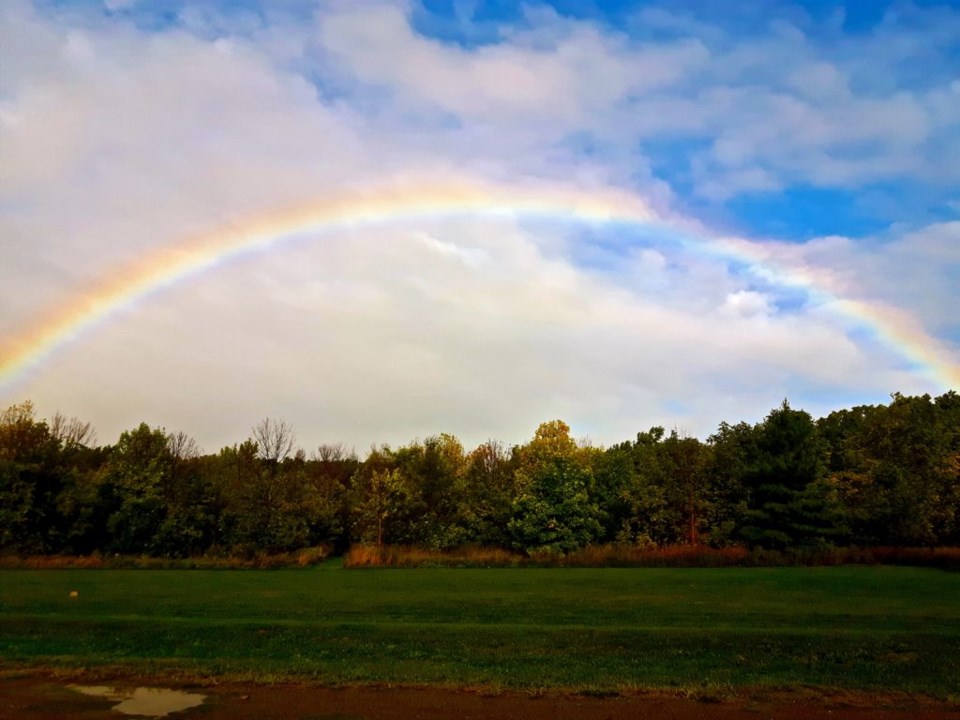
In timely fashion, as we get closer to summer, let’s talk about all we love about the great outdoors.
Poison ivy, ticks, and mosquitoes are the three main clingers of anti-outdoor conversations. I believe it’s in human nature to seek the potential dangers and inconveniences in our surroundings. To understand these surroundings, especially nature, one can eventually find the confidence to have a positive outdoor experience versus avoiding it.
My aim is to deconstruct the wall these three living things have built between our houses and local trails. On my hiking tours and in chatting, I have heard people say they avoid the outdoors, or know others who do, because of ticks or mosquitoes. I am baffled, although understanding — that means all of Niagara’s incredible forests, wetlands, and hiking trails are written off because of these little creatures.
There’s nothing quite like a dozen mosquitoes clambering for space on your bare hand, as you try to hold still to get that perfect photo. I get it. Some of these critters are already out, but the cool spring has kept them somewhat at bay. I see hundreds of thousands of their larvae, crowding the surface of the swamps in Heartland Forest, where I work. They’re going to grow wings and be out within the next two weeks in a big way. And as much as we don’t like them, they are absolutely critical to the food web of life.
If you want to hike and enjoy tranquility without insects in NOTL, I recommend areas of deeper forest with little undergrowth and good drainage. Of course, open areas with good breezes are great too. Some areas of the Niagara Escarpment along the Bruce Trail are mosquito-friendly, even in peak midsummer season. Thankfully, West Nile virus is extremely rare, with only nine cases ever recorded in the Niagara region, but it never hurts to use insect repellent or dress for the buggy occasion.
Another sign of summer is that you hop into bed, and are truly convinced that every itch or movement you feel is a tick under the sheets. And don’t ticks carry Lyme disease?
Due to the more unconventional nature of my hiking, take it from me — from a statistical standpoint. I have seen many ticks, sometimes in startling densities in certain habitats. If I had a dating profile, I would have to include, “removes up to 100 ticks per year” on it. That is my best guess, and to clarify, I’d say I usually only find a couple biting and the other 98 would be flicked away.
In my lifetime, I’ve had countless ones that have bitten me. A tick has never made me sick or given me Lyme disease, but I must relay that the horrendous, all-encompassing illness is to be taken seriously. I know people close to me who have had it, or are still fighting it.
My point about ticks is to highlight how unlikely contracting Lyme disease really is. Generally, you have to go off the trails to pick up ticks, where they wait in shrubs, bushes, and high grasses. Even if you pick one up, or a whole bunch, odds are they are dog ticks. This is a different and far more common species than the deer (or black-legged) tick, which is thankfully uncommon.
It’s the deer tick that is a potential carrier for Lyme disease. The tick has to remain in the body for a substantial length of time to deliver the bacteria to your system. Hopefully by then, you would have gone home and found the critter on you. To add another layer of security, not every deer tick carries Lyme disease.
Now on to poison ivy. I think we can all agree showing up to work with a red rash on your upper body is an excellent way to break the ice between you and your customers, all thanks to that annoying vine you touched and removed from the fence. It is super easy to avoid once you gain the basic identification skills (and don’t go headfirst into impenetrable scrub, like me). Avoidance is key, and quite simple. Poison ivy should never be a deterrent from enjoying the outdoors. The old saying “three leaves, let it be” is a safe starting point for now. It’s also worth knowing it can grow as a small shrub, an individual plant, or a climbing vine.
With the appropriate knowledge of where and where not to set foot, we can enjoy nature with peace of mind. And this is still one of the best times of year to do so.